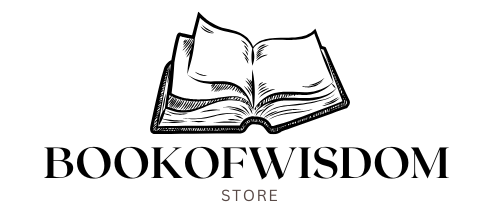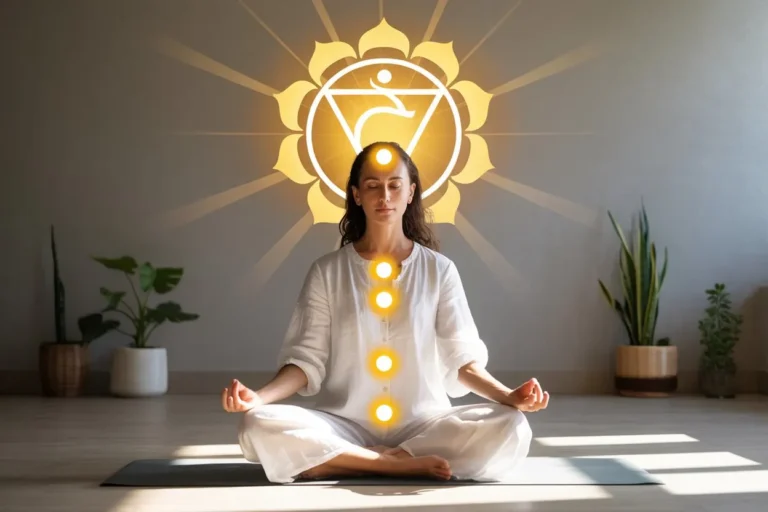3 Best Yoga Music and Meditation Music Instrumentals
Introduction to Yoga Music and Its Transformative Power
Have you ever noticed how a simple melody can transport you to a place of peace? That’s the magic of yoga music. When you combine the ancient practice of yoga with the right soundscape, something beautiful happens. Your mind quiets, your body relaxes, and you find yourself diving deeper into your practice than ever before.
Music for yoga and meditation isn’t just background noise. It’s a powerful tool that guides your breath, supports your movements, and creates an atmosphere where transformation becomes possible. Whether you’re a seasoned yogi or just starting your journey, understanding how to harness the power of yoga meditation music can take your practice to extraordinary heights.
What Is Yoga Music?
Defining Yoga Music
Yoga music is any sound composition designed to complement and enhance your yoga practice. It’s not limited to one genre or style. Instead, it encompasses a wide range of musical expressions—from ancient Sanskrit chants to modern ambient soundscapes. The key characteristic? It supports mindfulness, encourages relaxation, and helps you maintain focus throughout your practice.
Think of yoga music as your silent teacher. While your instructor guides your physical movements, the music guides your internal experience. It creates a sonic container that holds space for your practice, allowing you to explore your inner landscape without distraction.
The Role of Music in Yoga Practice
Music serves multiple purposes during yoga. It can set the pace for your flow, signal transitions between poses, and create emotional resonance that deepens your practice. During challenging poses, uplifting melodies can provide encouragement. During restorative sequences, gentle instrumentals can facilitate deeper relaxation.
But here’s what makes music truly powerful: it bypasses your analytical mind and speaks directly to your emotions. This direct pathway allows you to access deeper states of consciousness more quickly than you might through physical practice alone.
Table of Contents
Understanding Music for Yoga and Meditation
How Music Enhances Meditation
Meditation is about finding stillness, but paradoxically, the right music can help you get there faster. Meditation music instrumentals act as an anchor for your wandering mind. When thoughts arise—and they will—the gentle, repetitive patterns in the music give you something to return to, just like your breath.
The beauty of instrumental meditation music lies in its simplicity. Without lyrics to engage your language centers, your mind remains free to settle into deeper states of awareness. The sounds become like gentle waves, washing over you and gradually smoothing out the rough edges of mental chatter.
The Science Behind Sound and Relaxation
There’s solid science backing up what yogis have known for centuries. Research shows that certain sound frequencies can actually alter your brainwave patterns. When you listen to music with slower tempos and harmonic structures, your brain begins to synchronize with these patterns—a phenomenon called “entrainment.”
This synchronization shifts your brainwaves from the busy beta state associated with normal waking consciousness to the slower alpha and theta states associated with deep relaxation and meditation. It’s like tuning a radio—when you find the right frequency, everything becomes clearer.
Types of Yoga Meditation Music
Traditional Yoga Music
Traditional yoga music draws from ancient Indian classical traditions. You’ll hear instruments like the sitar, tabla, and tanpura, often accompanied by devotional chanting or mantras. These sounds carry thousands of years of spiritual practice within them, connecting you to a lineage of seekers who came before.
Sanskrit mantras hold particular power in traditional yoga music. Words like “Om” aren’t just sounds—they’re vibrational formulas designed to affect consciousness. When you hear these chants during practice, you’re participating in an ancient technology of transformation.
Contemporary Yoga Music
Modern yoga music blends traditional elements with contemporary production. You might hear electronic beats mixed with tabla rhythms, or ambient soundscapes layered with singing bowls. This fusion creates something accessible to modern practitioners while honoring ancient wisdom.
Artists like Deva Premal, Krishna Das, and MC Yogi have pioneered this contemporary approach, making yoga music appealing to wider audiences without sacrificing depth or authenticity.
Nature Sounds and Ambient Music
Sometimes the best yoga music comes from nature itself. The sound of rain, ocean waves, forest birds, or flowing streams provides a perfect backdrop for practice. These sounds remind us of our connection to the natural world and help ground our practice in something larger than ourselves.
Ambient music takes this concept further, creating sonic landscapes that evoke natural environments or emotional states. These compositions often use sustained tones, minimal melodies, and plenty of space—allowing your practice to unfold organically.
The Benefits of Meditation Music Instrumentals

Reducing Stress and Anxiety
In our hyperconnected world, stress has become the default setting for many people. Meditation music instrumentals offer a refuge from this constant stimulation. When you practice with calming music, your nervous system receives permission to downshift from fight-or-flight mode into rest-and-digest mode.
Studies have shown that listening to relaxing music can lower cortisol levels, reduce heart rate, and decrease blood pressure. These aren’t just feel-good effects—they’re measurable physiological changes that promote healing and wellbeing.
Improving Focus and Concentration
Ever tried to meditate in complete silence, only to find every little sound becomes a distraction? Meditation music creates a consistent auditory environment that masks irregular noises. This sonic consistency helps your mind settle more quickly and maintain focus longer.
The repetitive patterns in yoga music also engage your brain’s pattern-recognition systems in a gentle way, giving your conscious mind something to latch onto while deeper parts of your awareness expand.
Enhancing Sleep Quality
Many people discover that the music they use for yoga and meditation also helps them sleep better. The same calming properties that facilitate relaxation during practice work wonders at bedtime. Gentle instrumentals can help quiet the mental chatter that often keeps us awake, allowing for easier transitions into sleep.
Creating a Sacred Space
Music has the remarkable ability to transform ordinary spaces into sacred ones. When you begin your practice with intentionally chosen music, you’re essentially casting a sonic circle that separates practice time from everything else. This psychological boundary helps you leave behind the concerns of your day and enter fully into the present moment.
How to Choose the Right Music for Your Practice
Matching Music to Your Yoga Style
Different yoga styles call for different musical approaches. A vigorous Vinyasa flow might benefit from more rhythmic, energizing music with a clear beat to guide your transitions. Yin yoga, with its long-held poses, pairs beautifully with ambient soundscapes that encourage deep release.
Restorative yoga practices thrive with the most gentle instrumentals—think singing bowls, soft piano, or nature sounds. The music should be so subtle it almost disappears, supporting your surrender without demanding attention.
Tempo and Rhythm Considerations
The tempo of your music matters more than you might think. For meditation, slower tempos around 60 beats per minute naturally encourage your heart rate to slow down. For more active practices, slightly faster tempos can energize without overstimulating.
Pay attention to how rhythm affects your practice. Strong, regular beats can help synchronize movement with breath during flow sequences. Irregular or absent rhythms work better for meditative practices where you want to lose track of time.
Personal Preferences Matter
Here’s the truth: the “best” yoga music is whatever works for you. Some practitioners love traditional mantras, while others find them distracting. Some need complete silence, while others crave constant sound. Your practice is personal, and your musical choices should reflect your unique needs and preferences.
Experiment with different styles and notice how they affect your experience. Trust your instincts. If something doesn’t feel right, it probably isn’t right—for you, right now.
Popular Instruments in Yoga and Meditation Music

Tibetan Singing Bowls
These ancient instruments produce rich, harmonic overtones that seem to massage your cells from the inside out. When struck or rubbed, singing bowls create complex sound patterns that promote deep relaxation and can even induce meditative states on their own.
Many practitioners report feeling physical sensations when listening to singing bowls—tingling, warmth, or waves of energy moving through the body. These experiences reflect the profound effect these sounds have on our nervous systems.
Flutes and Wind Instruments
The breathy, flowing quality of flutes naturally evokes the breath itself, making them perfect companions for yoga practice. From Native American flutes to Indian bansuri to Japanese shakuhachi, wind instruments create melodies that seem to float effortlessly through space.
These instruments remind us that music, like yoga, is essentially about working with breath and energy. Their organic, human quality connects us to something primal and deeply familiar.
String Instruments
Instruments like the sitar, guitar, harp, and tanpura bring warmth and richness to yoga music. String instruments can create everything from meditative drones to intricate melodies, offering tremendous versatility for different practice styles.
The sustained tones of string instruments particularly suit longer holds and meditative practices, creating a sonic foundation that supports deep inner exploration.
Electronic and Synthesized Sounds
Modern technology has opened new sonic territories for yoga music. Synthesizers can create sounds impossible with traditional instruments—cosmic textures, evolving soundscapes, and frequencies precisely tuned for specific effects.
Don’t dismiss electronic music as less authentic. When created with intention and skill, synthesized sounds can be just as powerful as traditional instruments for facilitating transformative experiences.
Creating Your Own Yoga Music Playlist
Morning Yoga Sessions
Morning practices benefit from music that gently energizes without jarring your system awake. Look for compositions that start quietly and gradually build in energy, mirroring the sun’s natural progression. Bright flutes, gentle strings, and uplifting melodies work beautifully for morning flows.
Consider including some chanting or mantra music to set positive intentions for your day. The vibrations of these sounds can align your energy before you step into the world’s demands.
Evening Relaxation Practices
As day transitions to night, your music should support this natural winding down. Choose slower, deeper sounds—think bass-rich drones, soft piano, or gentle nature sounds. The goal is to signal your nervous system that it’s time to release the day’s tension.
Evening playlists can be longer and more spacious, allowing for extended relaxation and preparation for restful sleep. This is the time for your most soothing, nurturing musical choices.
Deep Meditation Sessions
For dedicated meditation practice, less is often more. Choose music with minimal melodic movement and plenty of space between sounds. Long, sustained tones, binaural beats, or extremely simple patterns work best for allowing your mind to settle into stillness.
Some meditators prefer music that fades out gradually, leaving them in silence for the deepest part of their practice. Experiment with this approach to see if it enhances your experience.
Where to Find Quality Yoga and Meditation Music

Where to Find Quality Yoga and Meditation Music
When it comes to deepening your yoga or meditation practice, the quality of your music matters as much as your breathing and posture. The right sounds can quiet your mind, balance your chakras, and elevate your inner state.
we offer Premium Yoga and Meditation Music designed with the same frequencies and soundscapes used by gurus and yogis during their highest states of meditation. Each track is crafted to help you enter a space of stillness, healing, and energy flow — ideal for yoga sessions, mindfulness practice, or peaceful relaxation.
Our collection blends soothing instruments, sacred tones, and natural ambient elements that align your energy centers and guide you toward a deeper connection with yourself. These are not ordinary tracks — they are spiritual tools created to awaken your consciousness and enhance every breath of your practice.
🕉️ Experience what masters listen to.
today and explore the same meditation music trusted by modern yogis and spiritual teachers worldwide. Feel the vibration.
The Cultural Origins of Yoga Music

Ancient Indian Traditions
The roots of yoga music stretch back thousands of years to the Vedic traditions of ancient India. Sacred texts like the Sama Veda are essentially musical compositions designed for chanting. These ancient practitioners understood that sound itself could be a vehicle for spiritual transformation.
Classical Indian music developed sophisticated systems of ragas—melodic frameworks associated with specific times of day, seasons, and emotional states. This deep understanding of music’s power to affect consciousness continues to influence yoga music today.
Buddhist Influences
Buddhism contributed significantly to yoga music traditions, particularly through practices like mantra recitation and singing bowl meditation. Tibetan Buddhist chanting, with its deep, resonant tones and overtone singing techniques, offers particularly powerful tools for meditation.
The Buddhist concept of sound as a path to enlightenment parallels yogic understanding, creating a rich cross-pollination of musical and spiritual traditions.
Common Mistakes When Using Music in Yoga
One frequent mistake is choosing music that’s too stimulating or complex. While you might love a particular artist, their music may demand too much attention during practice, pulling you out of your body and into analysis.
Another pitfall is volume. Music should support, not dominate your practice. If you’re straining to hear your own breath or your teacher’s instructions, turn it down. The music should create atmosphere without overwhelming your senses.
Ignoring personal response is perhaps the biggest error. If certain music consistently makes you feel agitated, sad, or distracted, it’s not serving your practice—regardless of how “authentic” or popular it might be.
Tips for Instructors: Incorporating Music in Classes
If you teach yoga, music selection becomes even more important. Your musical choices affect everyone in the room, so aim for broad appeal while maintaining the integrity of your teaching style.
Create playlists in advance rather than selecting songs spontaneously during class. This preparation ensures smooth transitions and maintains the energy flow you’ve designed. Consider the arc of your class—how will music support the journey from opening to peak to closing?
Be mindful of volume and acoustics in your space. What sounds perfect through headphones might be too loud or too quiet in a room full of bodies. Test your setup before students arrive.
The Future of Yoga and Meditation Music
As technology advances, new possibilities emerge for yoga and meditation music. Binaural beats and isochronic tones use specific frequencies to target particular brainwave states. Virtual reality experiences combine visuals with music for immersive meditation journeys.
Artificial intelligence is beginning to create personalized soundscapes that adapt in real-time to your heart rate or emotional state. While these innovations are exciting, remember that the essential power of music lies not in technology but in its ability to touch the human heart.
The future will likely bring fusion and experimentation, blending global musical traditions in new ways. Yet the core purpose remains unchanged: using sound to facilitate inner transformation and connection.
Conclusion
Yoga music and meditation music instrumentals are far more than pleasant background sounds. They’re powerful tools that can deepen your practice, accelerate your growth, and create experiences of profound peace and connection. Whether you prefer ancient chants or modern soundscapes, traditional instruments or electronic compositions, the right music can transform your yoga and meditation practice.
The key is experimentation and self-awareness. Pay attention to how different sounds affect your body, mind, and spirit. Trust your inner guidance over any external authority. Your perfect yoga soundtrack is waiting to be discovered—it’s the one that helps you come home to yourself, again and again.
As you continue your journey with yoga and meditation, let music be your companion. Allow it to support you, inspire you, and carry you deeper into the present moment. In the space between notes, in the silence that music creates, you might just discover the peace you’ve been seeking all along.
Yoga Music FaQ

Do I need music for yoga and meditation, or can I practice in silence?
You absolutely don’t need music—many practitioners prefer complete silence. Music is a tool that can enhance practice, but silence offers its own profound benefits. Try both approaches and notice which serves you better. Some people alternate depending on their state of mind or the time of day.
What’s the difference between yoga music and regular relaxing music?
Yoga music is specifically composed or selected to support mindful movement and meditation. It typically avoids sudden changes, jarring sounds, or lyrics that might distract from internal focus. Regular relaxing music might be pleasant but may not maintain the consistent energy and intentionality needed for practice.
Can I use music with lyrics for yoga practice?
While some practitioners enjoy lyrical music, especially devotional chanting, lyrics can engage your language centers and pull attention away from body awareness. If you do use lyrical music, choose songs with simple, repetitive lyrics or languages you don’t understand, allowing the words to function more like instruments.
How loud should yoga music be during practice?
Yoga music should be audible but not dominant—think of it as a gentle presence rather than a focal point. You should easily hear your breath and any verbal instructions. A good rule of thumb: if you’re tempted to sing along or find yourself listening more than practicing, it’s too loud.
Are there specific frequencies or sounds that are scientifically proven to enhance meditation?
Research suggests that sounds around 60 beats per minute can help slow heart rate, while certain frequencies like 432 Hz or 528 Hz have been associated with relaxation, though evidence is mixed. Binaural beats show promise for inducing specific brainwave states. However, the most effective meditation music is ultimately the kind that resonates with you personally, regardless of its technical specifications.







